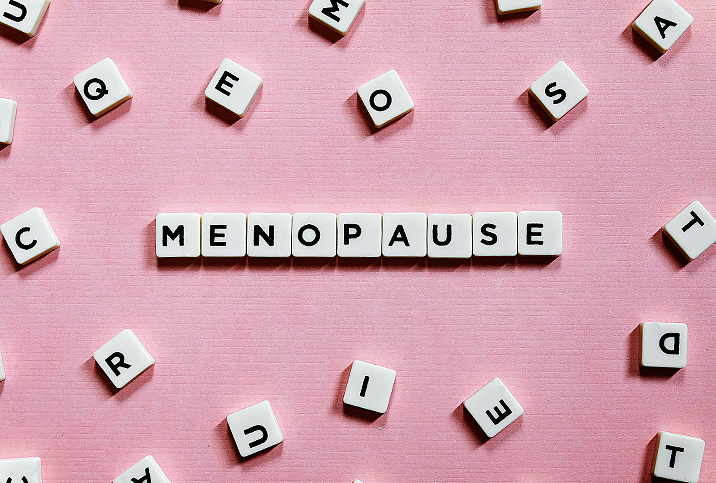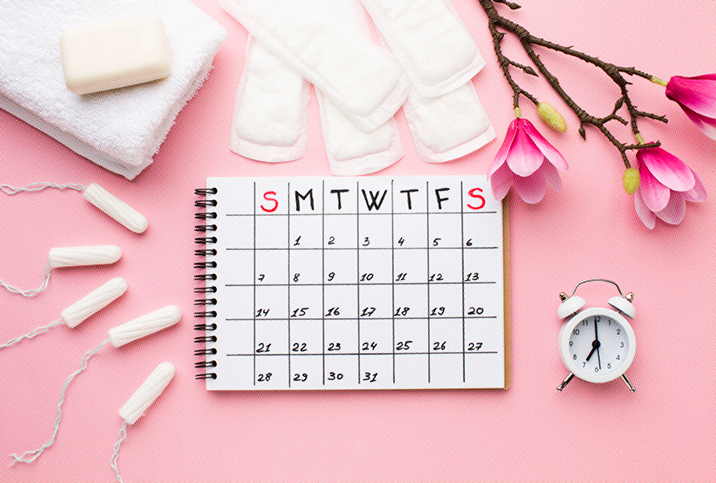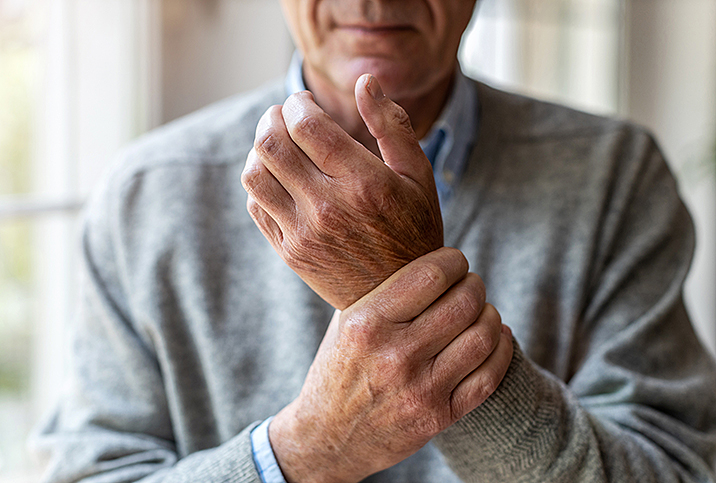5 Ways Women's Bodies Change After 40, And What to Do About It

It's easy to categorize any new problem as a part of aging. It's true that there are things all women will run into: getting closer to menopause and finding it harder to lose weight, for example. But is this just how it goes, or should we challenge our seeming fate?
What happens to women's bodies after 40?
Let's look at five common but impactful changes that happen to women's bodies after 40 and learn what you can do to cope with them.
1. Your progesterone tanks
According to Meg Mill, PharmD, a functional medicine health practitioner and clinical pharmacist, progesterone levels drop 5 to 10 years before estrogen levels do, leaving many women in their 40s estrogen-dominant even if they do not have exceptionally high estrogen levels. This imbalance can lead to:
- Weight gain
- Symptoms of premenstrual syndrome
- Unpredictable periods
- Anxiety
"So, if you are in your 40s and suddenly feel moody and anxious but can't figure out why, it may be a drop in your progesterone," Mill said. "To balance estrogen and progesterone levels, you can boost your intake of cruciferous vegetables to help your body [metabolize] estrogen."
Types of cruciferous vegetables include arugula, bok choy, broccoli, Brussels sprouts, cabbage, cauliflower, horseradish, kale, radishes, turnips, watercress and wasabi.
"You can also make some simple changes to decrease the load of estrogen getting into the body from outside sources," Mill added.
Choosing beauty products that don't contain known endocrine disruptors can prove helpful.
2. Muscle mass declines
The reduction of estrogen and testosterone levels in perimenopause and menopause can lead to a decline in muscle mass.
"Studies show you lose 1 percent of muscle mass per year after the age of 40," Mill said. According to the American Academy of Family Physicians, women in their 40s lose muscle mass twice as quickly as men.
The loss of muscle from age 40 onward is known to promote the onset of diseases, increase the risk of bone problems and reduce mobility. Your bones and your muscles are intrinsically linked, so if your muscles become weak, your bones also become weak. As you get older, skeletal muscle mass and function loss increase, which is clinically known as sarcopenia. It can also increase the risk of insulin resistance and is associated with osteoporosis/decreased bone density.
You may think there's no point picking up the weights if your muscle mass decreases anyway, but that's not the case. You can still build muscle after 40—it just takes a bit more effort and consideration.
"Exercise, particularly weight-bearing exercise, is essential to combat this loss of muscle mass," Mill advised.
To increase muscle mass, resistance training is most effective. We're not suggesting you rush straight down the gym and start weight-lifting—especially if you've never done it before. Walking and jogging are good options, but you should start by talking to your family physician and an exercise professional to get guidance on the safest way to build muscle without injuring yourself.
3. Weight can creep up on you
"The weight gain experienced in a woman's 40s is influenced by changes in lifestyle," said Michelle Rauch, M.S., RDN, a registered dietitian/nutritionist working out of The Actors' Fund Home in Englewood, New Jersey. Rauch explained that as they age, most people become less active, as they are busy with children, families and careers. This, combined with changes in hormones and a slowing metabolism, can bring on weight.
"We need to keep in mind that we need to change the way we eat as we age," Rauch explained. "Starting in our late 20s, our basal metabolism—that is, the energy needed for our bodies to work at rest for processes such as keeping the heart beating, inhaling and exhaling, etc.—decreases at approximately 5 percent every decade. Depending on your starting weight and how active you currently are, you will need to lower your daily caloric intake to avoid weight gain."
New studies investigating our basal energy are adding to our knowledge of this subject.
On the question of how much you need to lower your calorie intake, Rauch recommends that the reduction of calories is very individualized, depending on your activity levels. However, she recommends about 200 fewer calories per day as a good place to start. Bear in mind, though, that this reduction in calories will increase further across each decade.
How to combat weight gain in women's bodies after 40
Rauch advised that there are also other things you can do to help combat the weight gain:
- Stay active. Light weight-training can be beneficial, as it will help improve lean body mass and increase the rate of calorie burn. Include more physical activity in your day. You can do this by combining it with things you already do, such as cleaning, shopping or walking the dog. Park your car farther away from the store, or take the stairs instead of the escalator.
- Adjust the way you eat. Replace the calorie-rich foods in your diet with foods higher in fiber or water content to make you feel fuller for longer. Changes in hormones can wreak havoc on your hunger cues, so this is a way to satisfy those hunger signals without packing on extra pounds.
- Sleep well. As you get older, it is even more important to get enough sleep. Not getting enough can negatively affect the levels of ghrelin and leptin in your body, the hormones that control your appetite and satiety.
- Drink water. Your hypothalamus, a gland that regulates hunger and thirst, will mix up its signals at times. The error is not with the function of the hypothalamus: Since the same gland regulates both hunger and thirst, and eating and drinking are often linked, the signals your body gets from the hypothalamus can be easily confused or misinterpreted. At times, mild dehydration will present as feelings of hunger. Before reaching for something to eat, drink 4 to 8 ounces of water and wait 15 to 20 minutes to see if you are still hungry.
4. Unexpected incontinence problems
As mentioned, in women's bodies after 40, hormone levels change, impacting muscle mass and therefore strength. Part of these changes to the overall body include differences in the pelvic floor.
"Specifically, hormonal changes cause the pelvic floor to weaken and often lead to connective tissues becoming rigid and offering less support," said Aleece Fosnight, MSPAS, PA-C, CSC-S, a board-certified physician assistant specializing in sexual medicine, women's health and urology, and medical advisor at Aeroflow Urology.
One of the most common symptoms of pelvic floor changes is a leaky bladder or incontinence. Incontinence is when you cannot control your bladder, causing unexpected leakage.
"Incontinence is also paired with the urgency to urinate and inability to hold in your bowel movements until you get to a restroom, which is another type of incontinence common among older women," Fosnight said.
'Specifically, hormonal changes cause the pelvic floor to weaken and often lead to connective tissues becoming rigid and offering less support.'
Although common, incontinence is not normal and can have numerous causes, including hormonal changes, vaginal infections or irritation, urinary tract infections and constipation.
"However, in older women, incontinence most likely occurs due to weakened bladder muscles, weak pelvic floor muscles, damage from diseases that control the bladder, such as diabetes and multiple sclerosis, and even diseases that make it hard to get to the bathroom in time, like arthritis," Fosnight added.
Another pelvic floor dysfunction symptom many people often overlook is pain in seemingly unrelated places.
"It's important for women to look out for pelvic pain or rectal pain, which can sometimes be mistaken for bladder pain,'" Fosnight explained. "The lower back pain is also not to be overlooked, as pelvic floor muscles also work to support the spine and pelvis. When these muscles are strained, chances of lower back pain increase."
If any of these problems occur, it's a sign that it's time to visit a pelvic floor specialist.
"Painful intercourse and any other signs of sexual dysfunction is another red flag that you should get your pelvic floor checked out," Fosnight said.
Many treatment options can help you improve or resolve pelvic floor dysfunction problems—starting with pelvic floor exercises, such as Kegels.
5. Brain fog
It may not be an official medical diagnosis, but brain fog is a very real problem, affecting your ability to think. You get confused, can't find the right words or can't focus on what's going on. Why does this get worse when women turn 40?
Experts aren't quite sure, but some research suggests it may be due to changing neurological structures: Literally, the brain remodels, some parts of it diminishing in size while others grow to compensate. Potentially—though not certainly—the brain is cutting back on brain functions attached to certain reproductive functions. The upheaval from these changes could be what causes a woman's brain to stall out. Jen Gunter, an OB-GYN and educator, writes that this is comparable to experiencing some technical glitches as your phone updates, for example.
Gunter also writes that, thankfully, brain fog is largely temporary. Some women even report feeling sharper than ever once they've transitioned through menopause, a sentiment possibly supported by the same research into brain remodeling. In the meantime, the Harvard Health Blog recommends some daily lifestyle choices to mitigate your symptoms, such as managing stress and sleep, exercising and leaning on memory devices (visual cues, mnemonic devices and more) if brain fog is affecting your ability to recall information.
Though we'd like to believe there's a magic elixir or a cure-all for the many alterations that happen to us as we age, making any drastic changes to our lifestyles is best under the supervision of your medical team, so talk to a medical doctor before embarking on any lifestyle changes. And remember: Getting older is not a bad thing—you're just getting started.


















